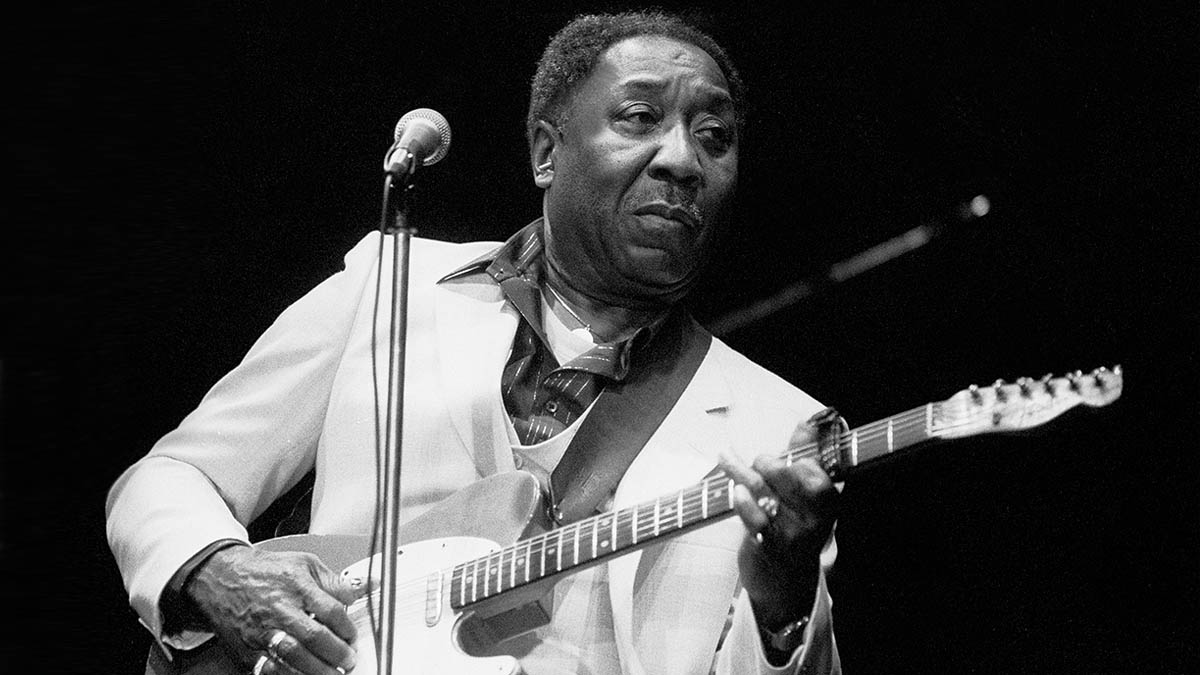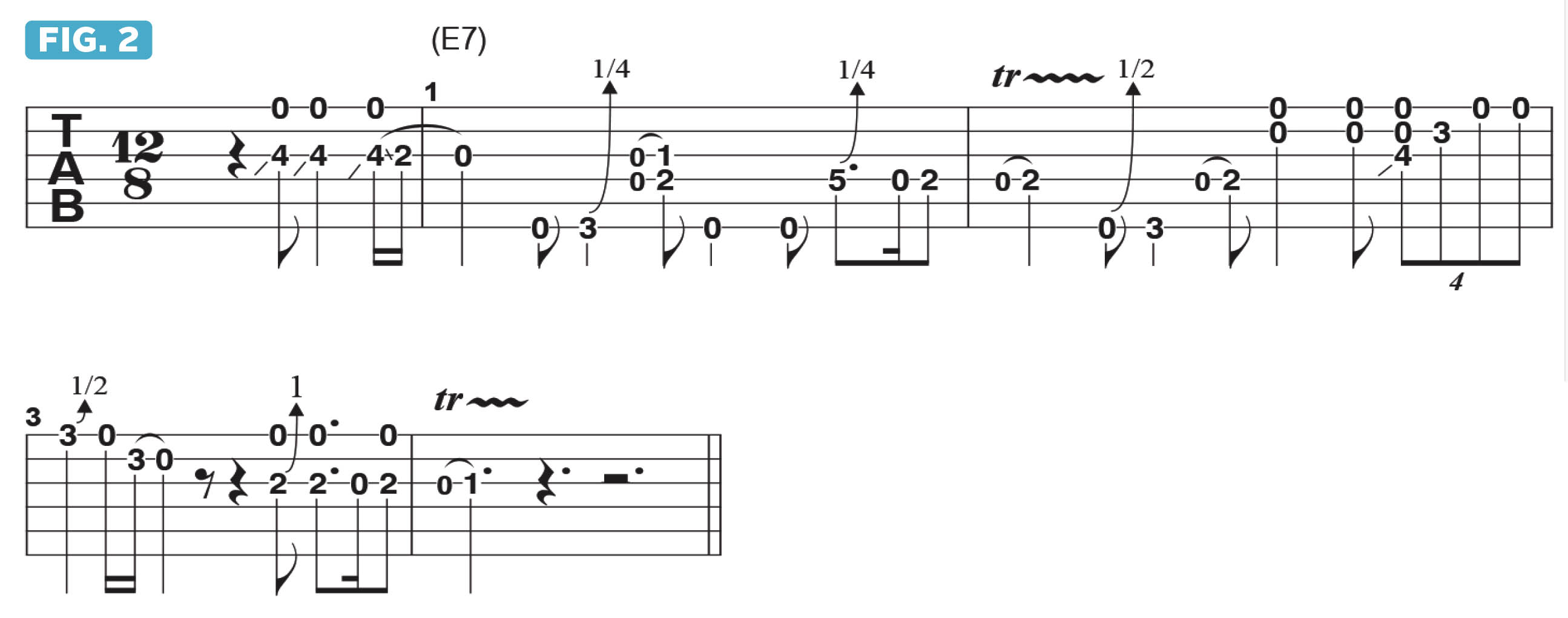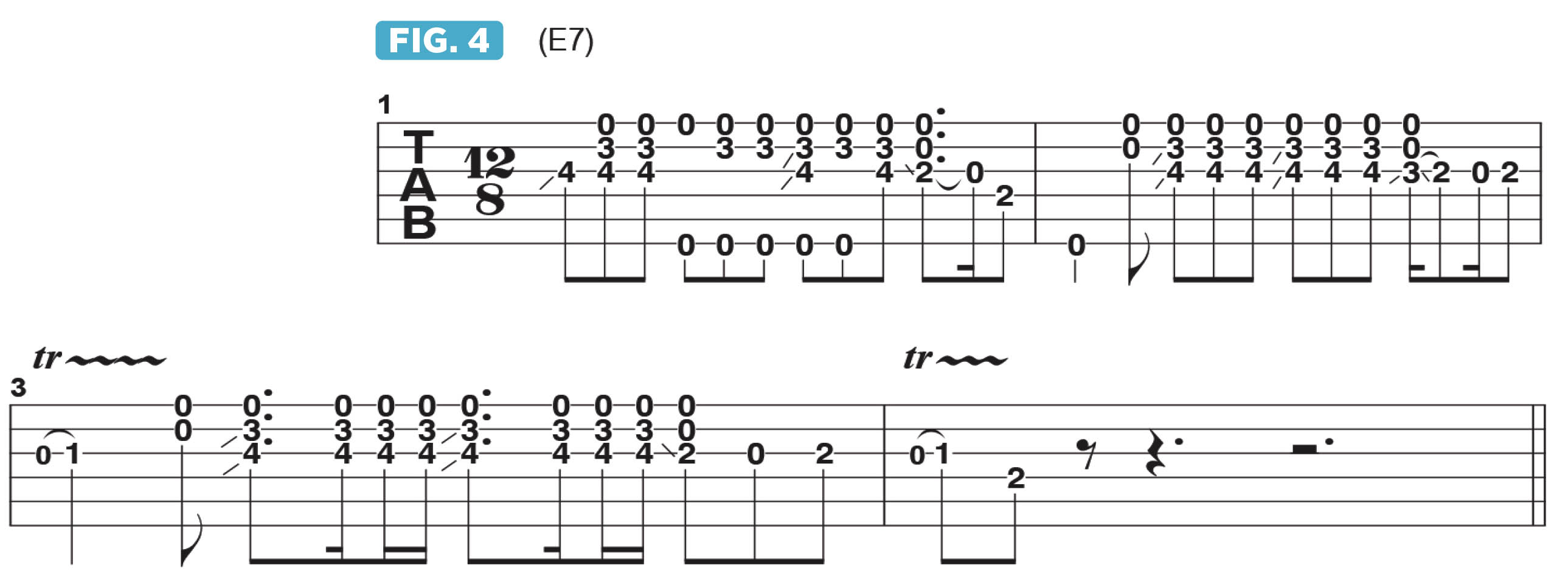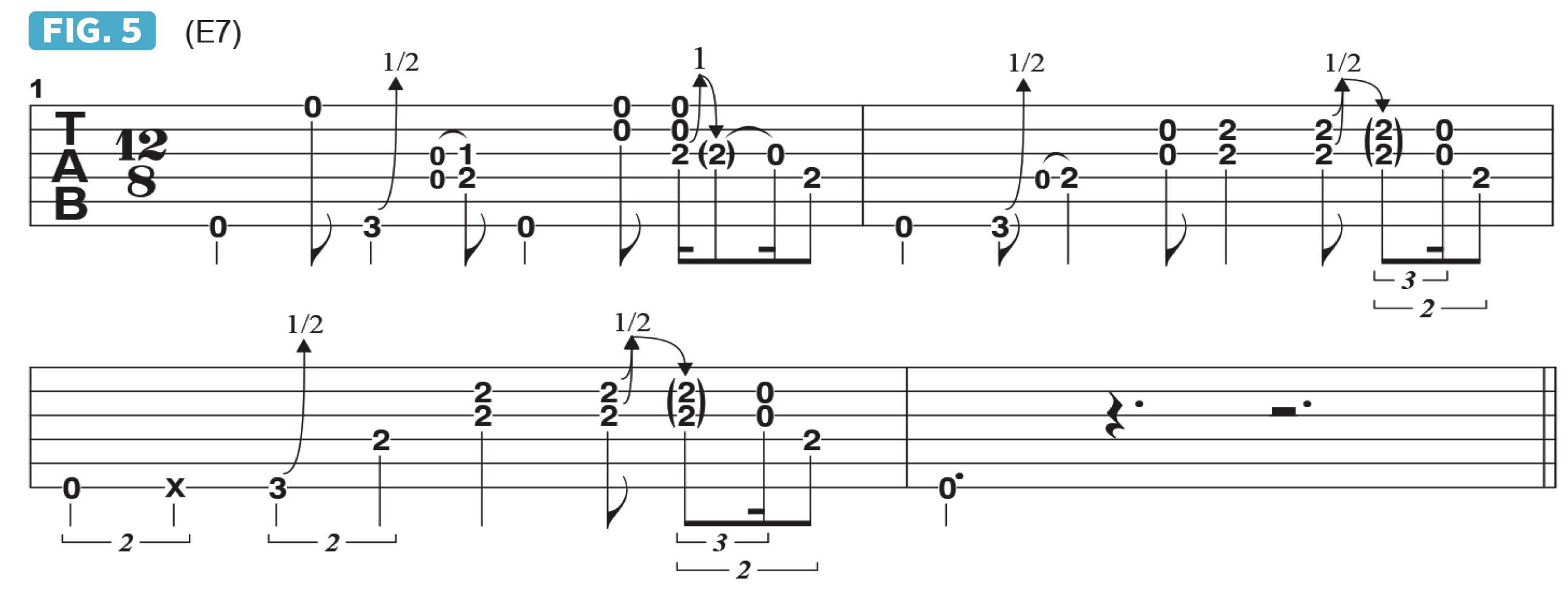How to incorporate open-string drones into an improvised blues solo
Taking inspiration from Muddy Waters' Rollin' Stone, this lesson will teach you how to make your one guitar sound fuller

Here, we're looking at the basic elements that make up Muddy Waters’ rhythm guitar playing and approach to single-note lines and solos on his blues classic, Rollin’ Stone. One essential element is his inclusion of open-string drones.
On guitar, a drone is most often played as an open string that is sounded and allowed to ring along with the performance of an additional melodic line.
One of the reasons the key of E is used so often in blues guitar music is that both the open low and high E strings can conveniently be used as drones in order to fill out the sound while also serving to emphasize the tonic, or home key, of E. Let’s look at some examples.
In Figure 1, I fingerpick the open high E string with my ring finger while playing, on the lower strings, an improvised melody based on the E minor scale pentatonic (E, G, A, B, D).
In bar 1, I attain unison high E notes by hammering-on from D to E on the B string while additionally fingerpicking the open high E. In bar 2, I drop this idea down an octave as I hammer-on from the open D string to E at the 2nd fret while fingerpicking the open high E string.

This technique can easily be applied to both melodies and solo ideas. In Figure 2, the song’s melody is approximated and sounded on the lower strings with the open high E drone added to the majority of the melodic line.

Figure 3 presents another approach to a vocal-like melody, this time filled out with the inclusion of both the open B and high E strings.
Jimi Hendrix and Johnny Winter both recorded fantastic versions of Rollin’ Stone, dubbed, Catfish Blues by both of them, and – of course – both Jimi and Johnny added a barrage of brilliant musical ideas to the basic Muddy template.

For example, Jimi would often craft phrases along the lines of Figure 4, repeatedly sliding up to B and D on the G and B strings while adding the open high E-string drone and additionally developing more complex rhythmic syncopations along the way, such as those in bar 3.

During the “chorus” of Rollin’ Stone, Muddy adds an unusual syncopation to his vocal melody, which he mimics on the guitar. Figure 5 exemplifies this type of phrasing.

You’ll find many more twists on this stylistic approach to blues guitar in the playing of other essential artists like Lightnin’ Hopkins, John Lee Hooker and Robert Johnson, all of whom were huge influences on Jimi and Johnny, as well as every blues and blues-rock guitarist that followed and helped to develop and push the genre forward.
All of the “first generation” blues guitar giants will continue to inspire for generations to come, so be sure to listen to them all, as every recording illuminates what blues guitar is all about.
Get The Pick Newsletter
All the latest guitar news, interviews, lessons, reviews, deals and more, direct to your inbox!
Guitar World Associate Editor Andy Aledort is recognized worldwide for his vast contributions to guitar instruction, via his many best-selling instructional DVDs, transcription books and online lessons. Andy is a regular contributor to Guitar World and Truefire, and has toured with Dickey Betts of the Allman Brothers, as well as participating in several Jimi Hendrix Tribute Tours.
“There are so many sounds to be discovered when you get away from using a pick”: Jared James Nichols shows you how to add “snap, crackle and pop” to your playing with banjo rolls and string snaps
Don't let chord inversions bamboozle you. It's simply the case of shuffling the notes around








![Joe Bonamassa [left] wears a deep blue suit and polka-dotted shirt and plays his green refin Strat; the late Irish blues legend Rory Gallagher [right] screams and inflicts some punishment on his heavily worn number one Stratocaster.](https://cdn.mos.cms.futurecdn.net/cw28h7UBcTVfTLs7p7eiLe.jpg)


